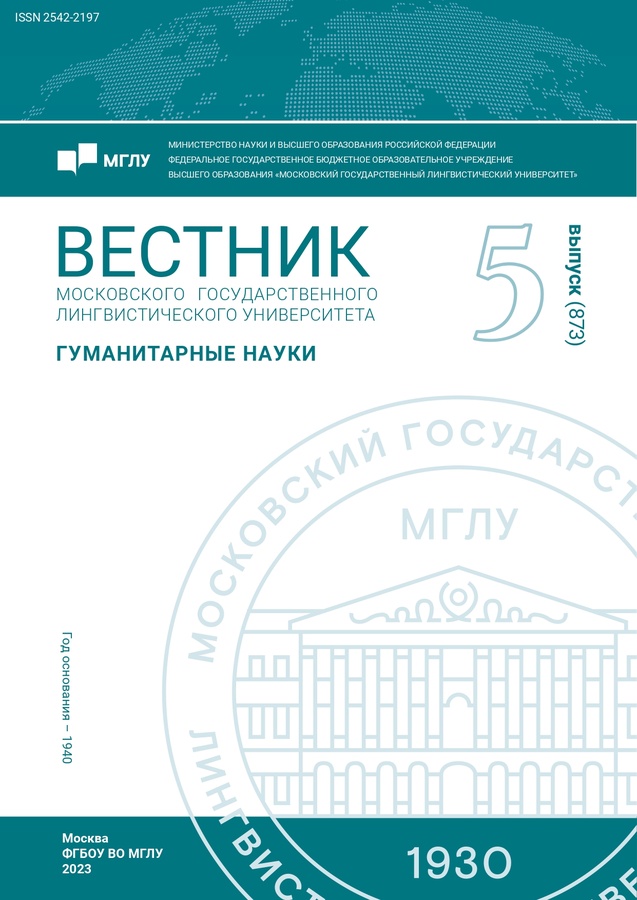Multimodal Euphemisation in Comedies as a Cognitive and Discourse Phenomenon
- Authors: Serozeeva D.N.1
-
Affiliations:
- Moscow State Linguistic University
- Issue: No 5(873) (2023)
- Pages: 107-114
- Section: Linguistics
- URL: https://journal-vniispk.ru/2542-2197/article/view/351581
- ID: 351581
Cite item
Full Text
Abstract
The article develops the research procedure of exploring euphemisation as a multimodal and cognitive-discourse phenomenon. Featuring a series of Russian and foreign comedies the study identifies the major cognitive mechanisms of its realization, which are conceptual integration and incongruity. The humorous effect is achieved via foregrounded incongruity shifts (the term introduced by S. Attardo) which appear in different semiotic modalities and are complemented by backgrounded incongruities.
About the authors
Diana Nailevna Serozeeva
Moscow State Linguistic University
Author for correspondence.
Email: avisliberan@gmail.com
Senior Lecturer at the Department of English, Faculty of Translation and Interpreting
Russian FederationReferences
- Enright, D. J. (1985). Fair of speech: the uses of euphemism. New York: Oxford University Press.
- Orlova, O. S. (2020). Printsip nepryamoi nominatsii v zagadkakh i ehvfemizmakh na temu rozhdeniya i smerti = The principle of indirect nomination in riddles and euphemisms on the topic of birth and death: PhD in Philology. Moscow. (In Russ.)
- Porokhnitskaya, L. V. (2014). Kontseptual’nye osnovaniya ehvfemii v yazyke (na materiale angliiskogo, nemetskogo, frantsuzskogo, ispanskogo i ital’yanskogo yazykov) = Conceptual foundations of euphemy in the language (a case study of English, German, French, Spanish and Italian languages): abstract of Senior Doctorate in Philology. Moscow. (In Russ.)
- Hempelmann, Ch. F., Attardo, S. (2011). Resolutions and their incongruities: Further thoughts on Logical Mechanisms. Humor, 24(2), 125–149.
- Fauconnier, G., Turner, M. (2008). The way we think: Conceptual blending and the mind’s hidden complexities. New York: Basic Books. Reprint edition.
- Alekseenko, N. V. (2021). Markery fiktivnoi kommunikatsii v mono- i polimodal’nom diskurse = Markers of fictive interaction in mono- and multimodal discourse: abstract of PhD in Philology. Moscow. (In Russ.)
- Zykova, I. V. (2021). Lingvokreativnost’ v kinodiskurse = Linguistic creativity in cinematic discourse. In Lingvokreativnost’ v diskursah raznyh tipov: Predely i vozmozhnosti (pp. 100–189). Moscow: R-Valent. (In Russ.)
- Kiose, M. I. (2021.) Sekrety interpretacii teksta i izobrazhenija. Konstruirovanie i okulograficheskij jeksperiment = Secrets of interpretation of text and image. Construal and oculographic experiment. Moscow. (In Russ.)
- Burridge, K. (2012). Euphemism and language change: the sixth and seventh ages. Lexis, 7, 65–92.
- Coulson, S., Oakley, T. (2000). Blending basics. Cognitive Linguistics, 11(3/4), 175–196.
Supplementary files










